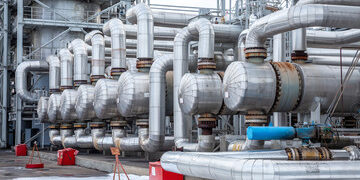The world of cinema has undergone significant transformations over the years. From the invention of sound in films to the rise of digital technology, each milestone in film history has changed the way we experience movies. As technology advances and the world around us evolves, we can only imagine how cinema will look in the next decade. In this article, we’ll explore the potential changes, challenges, and innovations that will shape the future of movies in the next 10 years.
1. The Evolution of Movie Formats and Viewing Experiences
The most obvious change to cinema in the coming years will likely be the way films are presented. Over the past few decades, we’ve seen the shift from traditional film reels to digital projection, revolutionizing how movies are distributed and projected. Looking forward, we can expect even more advancements in viewing experiences.
a. Immersive Technologies: Virtual Reality (VR) and Augmented Reality (AR)
One of the most exciting developments in cinema is the integration of virtual reality (VR) and augmented reality (AR) into the movie-watching experience. While VR is still in its early stages, its potential to transform the way we watch films is undeniable. In the next decade, it’s possible that cinema will become more immersive, allowing viewers to step into the movie and interact with the characters and settings. Imagine watching a Star Wars film where you’re not just watching from the sidelines, but actively participating in the action, controlling the outcome of scenes.
Augmented reality could also be used to bring interactive elements to a traditional viewing experience. For example, during a film, audiences might be able to use their smartphones or AR glasses to see additional information about the characters or objects in the film. This could add an educational or entertaining layer to the movie-watching process.
b. 3D and Holograms
3D technology has already made an impact on cinema, with films like Avatar showcasing stunning visuals. However, in the next decade, we may see 3D and holograms taken to new heights. With improvements in display technology and a better understanding of human visual perception, future 3D films may be more realistic, making it feel as though objects and characters are right in front of you.
Holographic technology, which has already been used in live performances, could also make its way into the cinema. It’s conceivable that in 10 years, audiences will be able to watch films with holographic projections, making them feel as though they’re sitting in the same room as the actors. This could revolutionize not only movie theaters but also home entertainment.
Movie4Me is a popular streaming platform that offers a wide range of films across different genres. Known for its user-friendly interface and vast library, Movie4Me allows movie enthusiasts to easily explore and enjoy both classic and contemporary movies. It’s a great resource for discovering high-quality cinema online.
2. Streaming Dominance and the Evolution of Movie Consumption
The rise of streaming services like Netflix, Hulu, Disney+, and Amazon Prime Video has already changed the movie industry. As we look to the next 10 years, streaming will likely continue to dominate, but the way we consume movies could change dramatically.
a. Subscription-Based Models and Personalized Content
In the next decade, we may see an even greater shift towards subscription-based streaming services. These platforms will likely become more personalized, using artificial intelligence to recommend movies based on individual preferences and past viewing history. The algorithms will become increasingly sophisticated, ensuring that viewers are consistently introduced to new content tailored specifically for them.
Moreover, with the rise of exclusive streaming content, we may see more movies being produced specifically for digital platforms rather than traditional theaters. The growing demand for original content from platforms like Netflix and Amazon Prime has already led to the production of high-quality films and series, and this trend is expected to continue.
b. The Rise of 4K, 8K, and Beyond
As internet speeds increase and technology improves, streaming platforms will likely start offering movies in higher resolutions such as 4K and 8K. Currently, 4K streaming is already available on many platforms, but as the technology becomes more widely adopted, even home viewers will have access to incredibly high-definition movies that look almost as good as being in a movie theater.
Moreover, the quality of sound will also be significantly improved, with advancements in surround sound and spatial audio becoming standard in home cinema systems. This will ensure that the home movie-watching experience is as immersive as possible, even without the need to go to a theater.
c. Integration of AI and Machine Learning in Filmmaking
Artificial Intelligence (AI) is already making waves in various industries, and the movie industry is no exception. In the next 10 years, AI and machine learning could play a key role in both the creation and consumption of movies.
AI could be used to automate many aspects of filmmaking, from scriptwriting to editing. There are already tools that assist with tasks like color correction and sound editing, but in the future, AI could take over much of the creative process. For example, AI might be used to generate scripts based on certain themes, story structures, or even specific audience preferences.
Furthermore, AI could be used in post-production to enhance the visuals of films, improving CGI and special effects, making them more realistic and engaging. The impact of AI on filmmaking could lead to entirely new forms of storytelling and cinematic experiences.
3. Changes in Movie Theaters: The Rise of Boutique Cinemas and Virtual Reality Theaters
While streaming is likely to dominate the next decade, traditional movie theaters will continue to exist in some form, albeit with significant changes. Movie theaters have already adapted by offering more luxurious experiences with reclining seats, gourmet snacks, and even in-theater dining. In the next decade, theaters will likely continue to evolve to meet the demands of consumers.
a. Boutique and Luxury Cinemas
One major trend that’s already gaining traction is the rise of boutique and luxury cinemas. These theaters are focused on providing a premium experience with high-end amenities. Expect to see more cinemas that offer unique experiences, such as private screenings, themed theaters, or even exclusive events where audiences can interact with filmmakers or stars.
b. Immersive Movie Theaters
The future of movie theaters could also see the rise of fully immersive cinemas, where the entire environment is designed to complement the film. This could include 360-degree screens, surround sound that mimics the audio of the movie’s environment, and even sensory effects like wind, temperature, or scent. Imagine watching a jungle-themed film where you can feel the wind blowing and hear the rustle of leaves around you.
c. Virtual Reality (VR) Cinemas
With the rise of VR technology, it’s likely that we will see a new form of movie-watching emerge: virtual reality cinemas. These VR theaters would offer a fully immersive experience where viewers wear VR headsets and experience the movie as though they’re a part of it. This could be particularly exciting for action films, science fiction, and fantasy genres, where viewers could interact with the movie’s environment in real-time.
4. Movie Making: The Impact of Technology on Filmmaking
The next 10 years will likely see significant changes in the way movies are made. With advancements in technology, filmmaking processes will become more streamlined, and filmmakers will have access to even more sophisticated tools to bring their visions to life.
a. Virtual Production: The Future of Filmmaking
Virtual production, as seen in films like The Mandalorian, has already begun to revolutionize how movies are made. This technology allows filmmakers to use digital backdrops in real-time, allowing actors to perform in realistic environments without ever leaving the studio. In the next decade, virtual production will become the norm, enabling filmmakers to create complex worlds with fewer resources, less travel, and fewer limitations.
b. AI and CGI Innovations
As AI continues to evolve, it’s likely that CGI and special effects will become even more realistic. In the future, we may see entirely digital actors or characters who seem indistinguishable from real-life performers. AI could also help create more convincing de-aging effects, allowing filmmakers to use actors of any age in films, or even bring deceased actors back to life in a virtual sense.
c. Democratization of Filmmaking
The tools needed to make high-quality films are becoming more affordable and accessible, enabling a broader range of people to try their hand at filmmaking. With improved cameras, software, and distribution platforms, the future of cinema may be dominated by independent creators and filmmakers who bypass traditional Hollywood studios. We could see a wider range of voices and stories, with diverse content being produced by creators from all over the world.
5. Globalization and Diversity in Cinema
The future of cinema will likely see a continued shift toward global content. As streaming platforms become more international, films from different cultures and languages will become more accessible to audiences worldwide. In the next decade, we can expect an even more diverse range of stories, characters, and filmmakers to emerge.
a. International Co-Productions
The international film market is already growing rapidly, and it’s expected to continue expanding in the next 10 years. Studios and streaming platforms will likely collaborate more on co-productions, bringing together talent from different countries to create films that appeal to a global audience.
b. Increased Representation and Inclusivity
As the world becomes more focused on diversity and inclusion, the film industry will likely continue to make strides in representing underrepresented groups. This includes not only racial and gender diversity but also LGBTQ+ representation, characters with disabilities, and the inclusion of stories from marginalized communities.
Conclusion
The future of movies is filled with exciting possibilities. As technology continues to advance, we can expect to see more immersive, personalized, and innovative cinematic experiences that change the way we watch and create films. Whether it’s through VR, AI, or streaming innovations, the next decade will bring a wealth of new opportunities for both filmmakers and audiences. One thing is certain: cinema will continue to evolve, offering new ways to tell stories and bring people together, no matter where they are in the world.



























